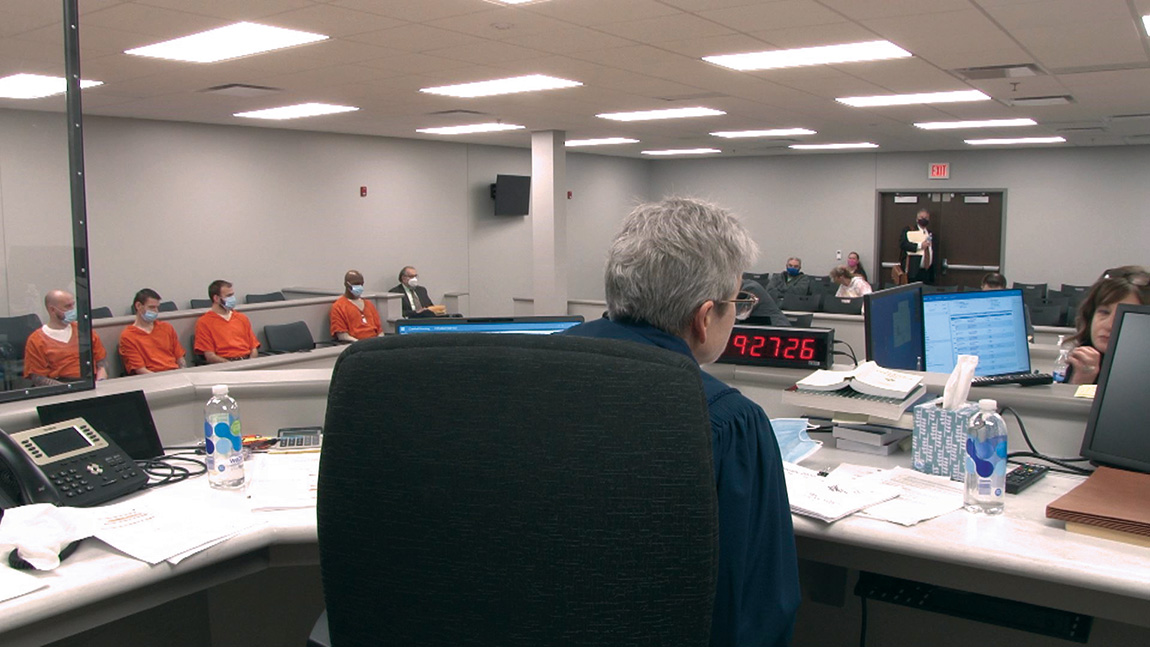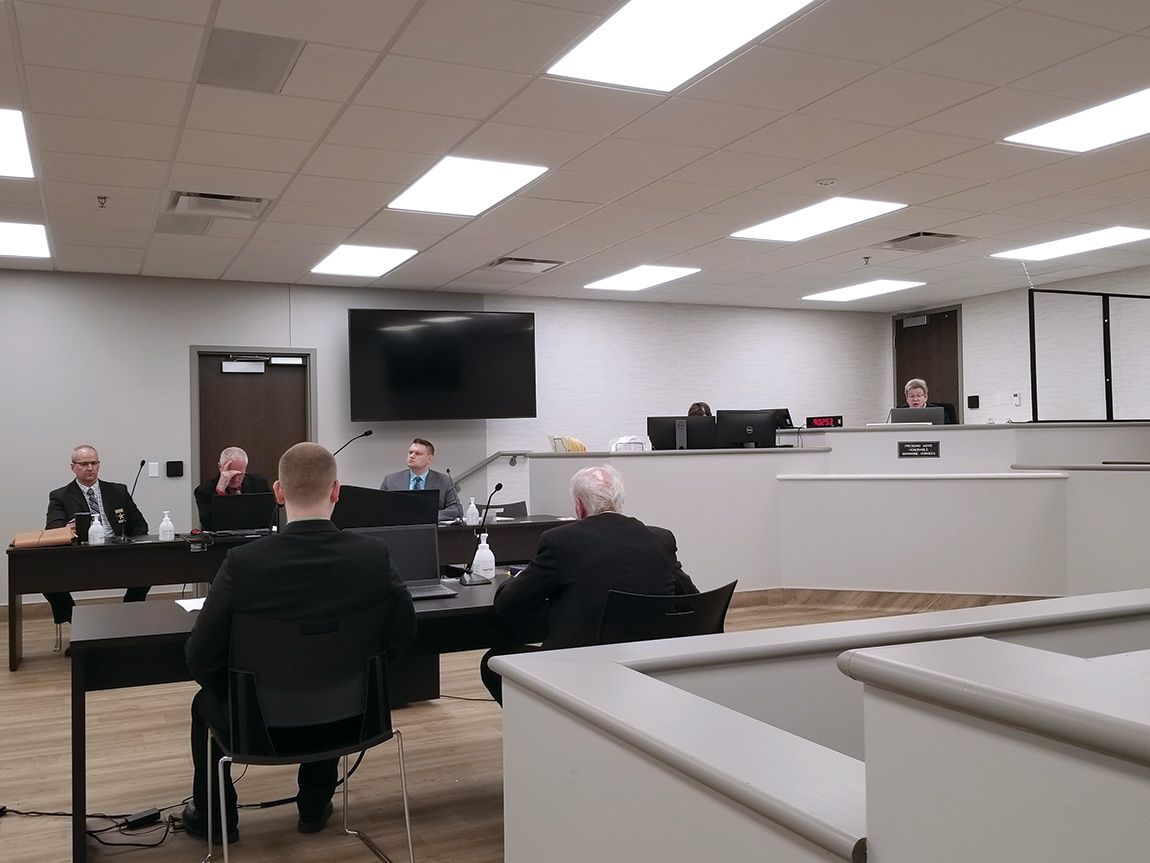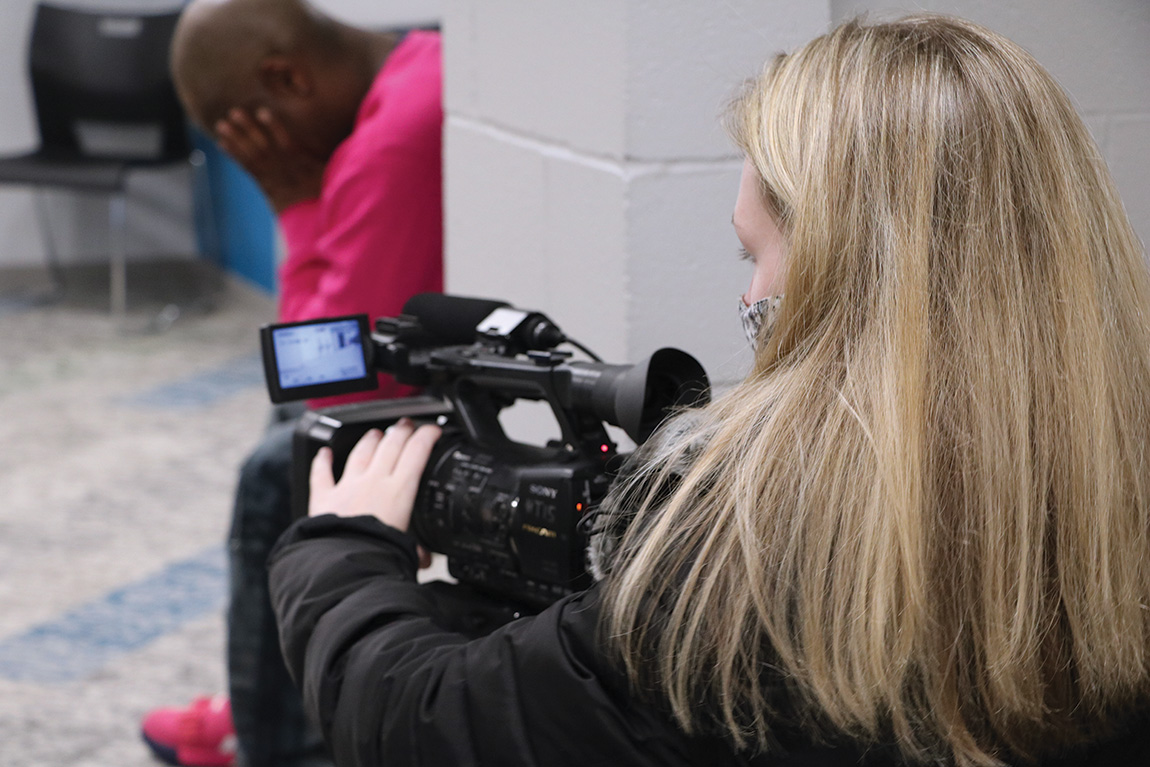By Jennifer Bauer, Staff Attorney · Office of Court Services
On December 1, 2021, the Supreme Court launched a broadcast pilot project in five Indiana trial courts. The four-month pilot authorizes news media to broadcast court proceedings in Allen Superior Court (Criminal Division), Delaware Circuit Court 1, Lake Superior Court (Civil 7), Tippecanoe Circuit Court, and Vanderburgh Superior Court. The pilot project is designed to promote transparency by showing Hoosiers the court process.



The Code of Judicial Conduct currently prohibits broadcasting, recording, or taking photographs of court proceedings and adjacent areas of the courtrooms. But the Supreme Court granted an exception at the request of two Judicial Conference committees: Community Relations and Court Security. The committees selected judges based on court jurisdiction, location, and judicial interest in the pilot project. Judges Fran Gull, Marianne Vorhees, Bruce Parent, Sean Persin, and Leslie Shively answered the call to open their courtrooms to local news media. The judges worked closely with press to address logistical and decorum needs.
“Once the hearings start everyone seems to forget news media is present.”
—Judge Sean Persin, Tippecanoe County
The Supreme Court’s pilot project order makes all civil and criminal proceedings eligible for broadcast coverage by the news media. Re-broadcast of live streamed court hearings are also permitted. Proceedings closed to the public by state statute or court rules are not included in the pilot. The order prohibits media coverage of jurors, minors, victims of sex offenses, juvenile matters, mental health commitments, and protection order hearings. No broadcast of a court proceeding is allowed without authorization from the judge.
The Supreme Court has conducted previous camera pilots, but this pilot gives judges wide discretion to allow cameras. Past pilots have included provisions that allowed one side or the other to deny the cameras; this pilot does not include that right of refusal. Also, in contrast with previous pilots, broadcast equipment is now smaller and quieter than ever, allowing journalists to use cameras and smart phones the size of a deck of cards to record and photograph. Media stories are now filed from anywhere with the click of a button, allowing reporters to live stream and upload video recordings without a trip back to the newsroom.
At the half-way point of the pilot, media interest in recording court proceedings had been focused on criminal cases and was limited. Student journalists at Purdue University’s The Exponent were the first to request and receive permission to record a court proceeding in Judge Persin’s Lafayette courtroom. Media outlets participating in the pilot study included WPTA-TV, WANE-TV, and Fox 55 TV in Fort Wayne, and Purdue’s The Exponent and the Journal and Courier newspapers in Lafayette. In late January, student journalists at Ball State University began filming hearings in Delaware Circuit Court to produce a documentary on the judicial process. Journalists have recorded and photographed three dozen initial hearings, pretrial conferences, and sentencing hearings.
“The media has been patient with delays in the hearings, and…has been unobtrusive and accommodating of the Sheriff’s security concerns regarding camera placement.”
—Judge Fran Gull, Allen County
According to Judge Persin, “Once the hearings start everyone seems to forget news media is present. The reporters continually seek guidance and understand the need to remain inconspicuous during the court proceedings.” Judge Gull agreed and added, “The media has been patient with delays in the hearings, and for the most part has been unobtrusive and accommodating of the Sheriff’s security concerns regarding camera placement. They have been professional in their coverage and presence.”
When the pilot concludes, the committees plan to evaluate the project with help from the Hoosier State Press Association and the Indiana Broadcasters Association. Both organizations are longtime champions of cameras in court. Committee members and media representatives will review survey responses from the participating judges, attorneys, and journalists. The group will also examine audio, video, and still photographs taken by journalists, as well as television and print stories produced by media outlets. As directed by the pilot order, the group will report its evaluation and recommendations to the Supreme Court.